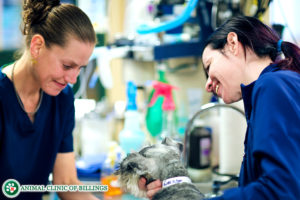arthroscopy and arthroscopic surgery
What is arthroscopy?
Arthroscopy is the direct visualization of the interior of a joint using an arthroscope. An arthroscope is a device composed of a long narrow metal tube tipped with a tiny camera, a light source, and a channel to infuse fluid. This can be inserted into a joint through a small hole in the skin. A second access point into the joint can be established to allow for the introduction of surgical instruments and the outflow of fluid.
What are the advantages of arthroscopy over open joint surgery (arthrotomy)?
Arthroscopy has several advantages over open joint surgery.
- Because the incisions are smaller and there is less disruption of the soft tissues surrounding the joint, the healing process after arthroscopy is usually quicker and more comfortable.
- Arthroscopic procedures are frequently shorter in duration than open procedures, resulting in more rapid recoveries from general anesthesia.
- The arthroscope typically allows for more complete visualization of a joint’s interior than would be possible in an open procedure, and because it provides significant magnification, the surgeon can view structures with greater detail, potentially making subtle abnormalities easier to see.
What are the limitations of arthroscopy compared to open joint surgery?
While arthroscopy is superior to open joint surgery in most cases, there are circumstances in which opening a joint becomes necessary. Poor visibility due to hemorrhage or severe pathology, and the need to remove a large bone or cartilage fragment, can both necessitate a switch from an arthroscopic approach to a full incision into the joint (arthrotomy). Another limitation involves the very small size of the joints of cats and small dogs. Some of these joints are simply too small to accommodate an arthroscope, necessitating an open approach.
How is arthroscopy used in veterinary medicine?
Arthroscopy is used in veterinary medicine to both diagnose and treat a wide variety of joint diseases. In the diagnosis of joint diseases, arthroscopy is frequently performed in conjunction with a CT scan to allow for both direct visualization of the joint’s interior as well as assessment of the state of the surrounding bones and soft tissues. Additionally, during a diagnostic arthroscopy biopsies of joint tissues can be collected for review by a pathologist. Numerous joint diseases can also be treated arthroscopically. Treatment most commonly involves the removal of diseased or damaged tissues or the transection of a problematic tendon.
What specific conditions can be diagnosed with arthroscopy in pets?
Conditions that can be diagnosed with arthroscopy include:
- Osteochondrosis dissecans in the shoulder, elbow, stifle, and hock
- Biceps tendinopathy in the shoulder
- Medial shoulder instability (damage to the medial glenohumeral ligament and/or subscapularis tendon)
- Incomplete ossification of the accessory caudal glenoid ossification center
- Fragmented coronoid process in the elbow
- Joint incongruity of the elbow
- Ununited anconeal process in the elbow
- Cranial and caudal cruciate tears in the stifle
- Meniscal tears in the stifle
- Synovial tissue pathology
What specific conditions can be treated with arthroscopy in pets?
Conditions that can be treated either entirely or partially with arthroscopy include:
- Osteochondrosis dissecans in the shoulder, elbow, stifle, and hock
- Biceps tendinopathy in the shoulder
- Medial shoulder instability (damage to the medial glenohumeral ligament and/or subscapularis tendon)
- Incomplete ossification of the accessory caudal glenoid ossification center
- Fragmented coronoid process in the elbow
- Cranial and caudal cruciate tears in the stifle
- Meniscal tears in the stifle
What is the aftercare following arthroscopic surgery?
Most patients will go home within 24 hours following arthroscopic surgery. They will have two very small incisions adjacent to the joint, which may be covered by a light bandage. Pain medication will be provided to maintain comfort throughout the healing process. Activity should be restricted to short leash walks until the pet’s recheck appointment in 10-14 days. You may be instructed to perform specific exercises such as stretches and range of motion during this period to help prevent stiffness as the tissues heal. Most patients are allowed to return to full activity after their post-operative recheck appointment. Depending on the specific diagnosis and health status of the joint, a regimen of physical rehabilitation therapy and joint health supplements may be prescribed.
What are the potential risks and complications of arthroscopic surgery?
Arthroscopy is generally a low-risk procedure. The most common intra-operative complication is a need to convert from an arthroscopic to an open joint surgery to perform the necessary treatment. This occurs in under 5% of cases. Potential post-operative complications include the need for a second surgery, temporary worsening of lameness, swelling of the joint area, infection, and temporary nerve injury (neurapraxia).

Let our highly trained and experienced team of veterinarians and veterinary technicians help you keep your cat as happy and healthy as they can be.
Call the Animal Clinic of Billings and Animal Surgery Clinic to schedule your pet cat’s next wellness examination with one of our veterinarians today!
406-252-9499 REQUEST AN APPOINTMENT
ANIMAL CLINIC OF BILLINGS AND ANIMAL SURGERY CLINIC
providing our region’s companion animals and their families what they need and deserve since 1981
1414 10th St. West, Billings MT 59102
406-252-9499



